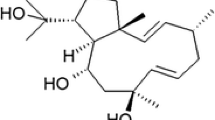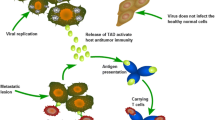Abstract
The number of viral infection cases in the Department of Gynecology and Obstetrics has tended to increase over last few years. Viruses form herpesvirus and cytomegalovirus families are associated with an increased risk for recurrent pregnancy loss. Photodynamic therapy (PDT) is a promising new approach to treat viral infections in which viral particles are inactivated. It exhibits great therapeutic potential, particularly among this group of patients. This study examined the use of PDT to treat herpesvirus infection (HVI) using an in vitro model. In this study, we used the Vero сell lineage as a suitable model of HVI, strains of HSV-1 (strain VR-3) and HSV-2 (strain MS) obtained from The National Virus Collection (London, UK), the photosensitizer Fotoditazine (Veta-Grand, Russia), an AFS physiotherapeutic device (Polironic Corporation, Russia). Laser light irradiation and the photosensitizer had different cytotoxic effects on the Vero cell cultures depending on the doses used. The optimal laser light and photosensitizer doses were determined. PDT had an antiviral effect on an in vitro model of HVI in cell culture. PDT has been shown to be effective treatment for HVI in vitro, leading to a reliable decrease of viral titer.






Similar content being viewed by others
References
Kim ID, Chang HS, Hwang KJ (2012) Herpes simplex virus 2 infection rate and necessity of screening during pregnancy: a clinical and seroepidemiologic study. Yonsei Med J 53(2):401–407. doi:10.3349/ymj.2012.53.2.401
Arenas Y, Monro S, Shi G, Mandel A, McFarland S, Lilge L (2013) Photodynamic inactivation of Staphylococcus aureus and methicillin-resistant Staphylococcus aureus with Ru(II)-based type I/type II photosensitizers. Photodiagn Photodyn Ther 10(4):615–625. doi:10.1016/j.pdpdt.2013.07.001
Nafee N, Youssef A, El-Gowelli H, Asem H, Kandil S (2013) Antibiotic-free nanotherapeutics: hypericin nanoparticles thereof for improved in vitro and in vivo antimicrobial photodynamic therapy and wound healing. Int J Pharm 454(1):249–258. doi:10.1016/j.ijpharm.2013.06.067
Wilson SS, Fakioglu E, Herold BC (2009) Novel approaches in fighting herpes simplex virus infections. Expert Rev Anti-Infect Ther 7(5):559–568. doi:10.1586/eri.09.34
Kovalchuk LV, Gankovskaya LV, Gankovskaya OA, Lavrov VF (2007) Herpes simplex virus: treatment with antimicrobial peptides. Adv Exp Med Biol 601:369–376
Gankovskaia OA, Koval’chuk LV, Gankovskaia LV, Lavrov VF, Romanovskaia VV, Kartashov DD, Fenzeleva VA (2008) Role of Toll-like receptors and defensins in antimicrobial protection of urogenital tract in females. Zh Mikrobiol Epidemiol Immunobiol 1:46–50
Juarranz A, Jaen P, Sanz-Rodriguez F, Cuevas J, Gonzalez S (2008) Photodynamic therapy of cancer. Basic principles and applications. Clin Transl Oncol 10(3):148–154
Shurshalina AV, Veryasov VN, Sukhikh GT (2001) The ratio of cytokine levels in genital herpes during various phases of infection. Bull Exp Biol Med 132(1):660–662
Anzivino E, Fioriti D, Mischietelli M et al (2009) Herpes simplex virus infection in pregnancy and in neonate: status of art of epidemiology, diagnosis, therapy and prevention. Virol J 6:40
Gardiner DW, Lunn DP, Goehring LS, Chiang YW, Cook C, Osterrieder N, McCue P, Del Piero F, Hussey SB, Hussey GS (2012) Strain impact on equine herpesvirus type 1 (EHV-1) abortion models: viral loads in fetal and placental tissues and foals. Vaccine 30(46):6564–6572. doi:10.1016/j.vaccine.2012.08.046
Gankovskaia OA, Bakhareva IV, Gankovskaia LV, Somova OI, Zverev VV (2009) Study of expression of TLR9, NF-kappaB, TNFalpha genes in cells of cervical canal mucosa in pregnant women with herpesvirus infection. Zh Mikrobiol Epidemiol Immunobiol 2:61–64
Matthews YJ, Damian DL (2010) Topical photodynamic therapy is immunosuppressive in humans. Br J \Dermatol 162:637–641. doi:10.1111/j.1365-2133.2009.09562.x
Kasermann F, Kempf C (1998) Buckministerfullerene and photodynamic inactivation of viruses. Rev Med Virol 8:143–151
Tan DH, Murphy K, Shah P, Walmsley SL (2013) Herpes simplex virus type 2 and HIV disease progression: a systematic review of observational studies. BMC Infect Dis 13(1):502
Jones СA (2009) Vertical transmission of genital herpes. prevention and treatment options. Drugs 69(4):421–434. doi:10.2165/00003495-200969040-00003
Vibholm L, Reinert LS, Sogaard OS et al (2012) Antiviral and immunological effects of tenofovir microbicide in vaginal herpes simplex virus 2 infection. AIDS Res Hum Retrovir 28(11):1–8. doi:10.1089/AID.2012.0078
Moor AC, Wagenaars-van-Gompel AE, Brand A, Dubbelman MA, VanSteveninck J (1997) Primary targets for fotoinactivation of vesicular stomatitis virus by AIPcS4 or Pc4 and red light. J Photochem Photobiol 65(3):465–470
Malik Z, Hanania J, Nitzan Y (1990) Bacterial effect of photoactivated porphyrins—an alternative approach to antimicrobal drugs. J Photochem Photobiol B Biology 5:281–293
Yang YG, Zou XB, Zhao H, Zhang YJ, Li HJ (2012) Photodynamic therapy of condyloma acuminata in pregnant women. Chin Med J 125(16):2925–2928
Calvino-Fernández M, García-Fresnadillo D, Benito-Martínez S, McNicholl AG, Calvet X, Gisbert JP, Parra-Cid T (2013) Helicobacter pylori inactivation and virulence gene damage using a supported sensitiser for photodynamic therapy. Eur J Med Chem 68:284–290. doi:10.1016/j.ejmech.2013.07.023
Kashiwabuchi RT, Khan Y, Carvalho FR, Hirai F, Campos MS, McDonnell PJ (2012) Antimicrobial susceptibility of photodynamic therapy (UVA/riboflavin) against Staphylococcus aureus. Arq Bras Oftalmol 75(6):423–426
Yin H, Li Y, Zheng Y, Ye X, Zheng L, Li C, Xue Z, Yin H, Li Y, Zheng Y, Ye X, Zheng L, Li C, Xue Z (2012) Photoinactivation of cell-free human immunodeficiency virus by hematoporphyrin monomethyl ether. Lasers Med Sci 27(5):943–950. doi:10.1007/s10103-011-1013-z
Xu J, Xiang L, Chen J, He Q, Li Q, Li J, Wang J (2013) The combination treatment using CO2 laser and photodynamic therapy for HIV seropositive men with intraanal warts. Photodiagn Photodyn Ther 10(2):186–193. doi:10.1016/j.pdpdt.2012.11.005
Abe H, Yamada-Ohnishi Y, Hirayama J, Owada T, Ikeda H, Ikebuchi K (2000) Elimination of both cell-free and cell-associated HIV infectivity in plasma by a filtration/methylene blue photoinactivation system. Transfusion 40(9):1081–1087
Kelly BJ, Bauerfeind R, Binz A, Sodeik B, Laimbacher AS, Fraefel C, Diefenbach RJ (2014) The interaction of the HSV-1 tegument proteins pUL36 and pUL37 is essential for secondary envelopment during viral egress. Virology 454–455:67–77
Sauter MM, Gauger JJ, Brandt CR (2014) Oligonucleotides designed to inhibit TLR9 block Herpes simplex virus type 1 infection at multiple steps. Antiviral Res 109C:83–96. doi:10.1016/j.antiviral.2014.06.015
Glants S. Medical and biological statistics. M.: Praktika, 1998; P. 459.
Bajgar R, Kolarova H, Bolek L, Binder S, Pizova K, Hanakova A (2014) High oxygen partial pressure increases photodynamic effect on HeLa cell lines in the presence of chloraluminium phthalocyanine. Anticancer Res 34(8):4095–4099
Author information
Authors and Affiliations
Corresponding author
Ethics declarations
Conflict of interest
The authors declare that they have no conflict of interest.
Rights and permissions
About this article
Cite this article
Zverev, V.V., Makarov, O.V., Khashukoeva, A.Z. et al. In vitro studies of the antiherpetic effect of photodynamic therapy. Lasers Med Sci 31, 849–855 (2016). https://doi.org/10.1007/s10103-016-1912-0
Received:
Accepted:
Published:
Issue Date:
DOI: https://doi.org/10.1007/s10103-016-1912-0




